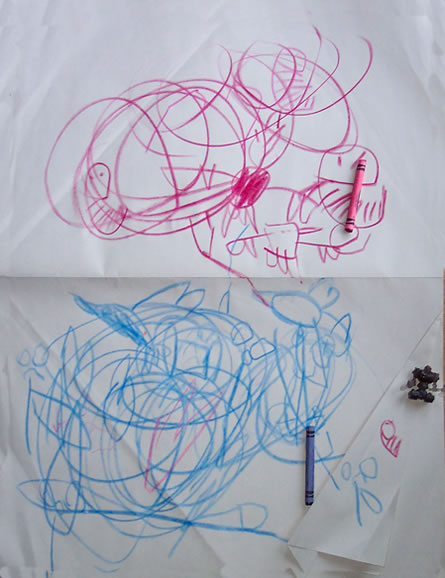What does war look like?
Friday, November 03, 2006
First graders need to know about the realities of the world. I try to be as honest as I can be to Gabriel, without scaring him too much. However, I wouldn't know how to start to explain the theme of War. And I have never tried.
War is an irrational invention, yet we (humanity) can't seem to live without it. There is no logical explanation for it. Wars seem to start with one aggressor who awaits a retaliatory action, however, why does the first attack take place? Not the action, but what is the real motive behind the action? Is it the action of one person? Is it the common consciousness of a whole population that drives leaders to attack?
In the times of antiquity, wars were means to empire expansion. Alexander the Great would have just been Alexander of Macedonia had he not been so driven to accomplish greatness for greatness sake and the want to expand the Greek empire to the ends of the world. Julius Caesar would have died an old man, without glory, had he not been one the greatest war generals of all time. What would our World look like without the dark ages or the Crusades, which were in essence religious wars against logic?
Wars are bad, and yet are necessary evils. Wars drive economies, yet destroy entire societies. Revolutions and the need of change have been the catalyst for the civil Wars of our romantic past--long live the Emperor. Too much is sacrificed, yet we sacrifice.
To my son, war is a battle of mice against frogs. They fight against each other for some reason he can't explain. At least, this is the sanitized version the Canadian government has included in the first grade curriculum. He knows it is bad, but it looks to him like red crayon scribbles fighting against blue crayon scribbles. And because he is a boy, there has to be a robot for good measure. I prefer this version and not the technicolour version with crumbled buildings, flying shrapnel, and sulfur smell. I am sorry if you have to explain that reality to a 6 year old. I truly am.

We didn't ask him to draw it, nor set up the scene for him. He acted on his own volition, as he does most of the time when he grabs his drawing pad and crayons and he starts to doodle making up stories and putting names to shapes: there is the 7 fin shark, the stick men with 10 toes and 10 fingers, giant snakes with 10 faces.
What I find the most refreshing on his "art" is that there is no inhibition or crazy drawing theory, only mood and feeling. We all do things to interpret everything going around us: we even rationalize War to be all about peace.
Today my son learned about war, and he drew war--he captured the chaos and messiness of it, without experiencing the true horror of mice and frogs mutilating each other for the glory of...Empire?
Comments: